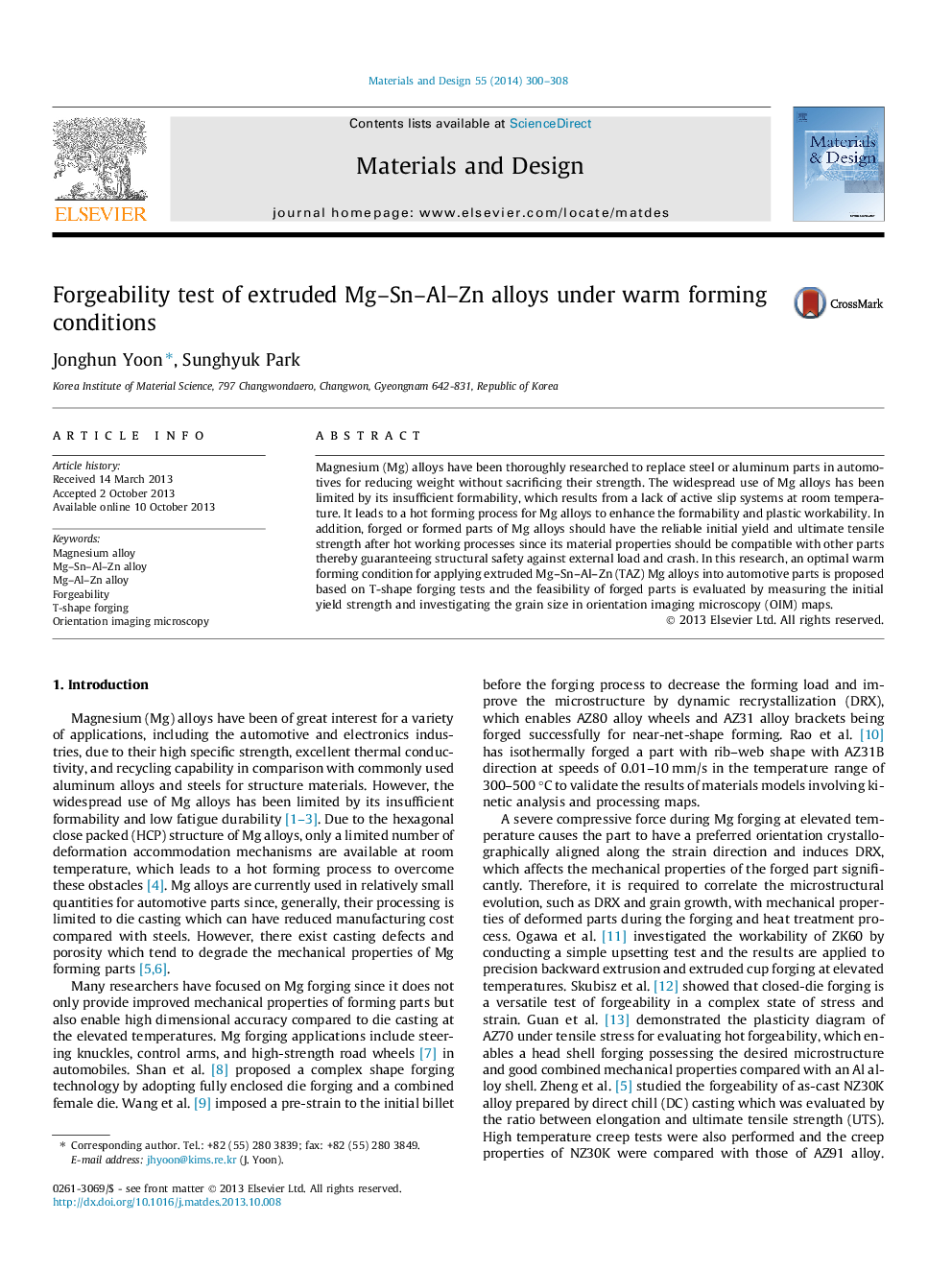| Article ID | Journal | Published Year | Pages | File Type |
|---|---|---|---|---|
| 829539 | Materials & Design (1980-2015) | 2014 | 9 Pages |
•We compared forgeability of new developed TAZ alloys with conventional AZ alloys.•Forgeability was evaluated with a T-shape forging under hot forming condition.•TAZ alloys show the best performance in forgeability under hot forging condition.•Microstructures of the forged part were investigated with EBSD experiments.•YS and UTS of forged part with TAZ alloy are enhanced compared with AZ alloy.
Magnesium (Mg) alloys have been thoroughly researched to replace steel or aluminum parts in automotives for reducing weight without sacrificing their strength. The widespread use of Mg alloys has been limited by its insufficient formability, which results from a lack of active slip systems at room temperature. It leads to a hot forming process for Mg alloys to enhance the formability and plastic workability. In addition, forged or formed parts of Mg alloys should have the reliable initial yield and ultimate tensile strength after hot working processes since its material properties should be compatible with other parts thereby guaranteeing structural safety against external load and crash. In this research, an optimal warm forming condition for applying extruded Mg–Sn–Al–Zn (TAZ) Mg alloys into automotive parts is proposed based on T-shape forging tests and the feasibility of forged parts is evaluated by measuring the initial yield strength and investigating the grain size in orientation imaging microscopy (OIM) maps.
